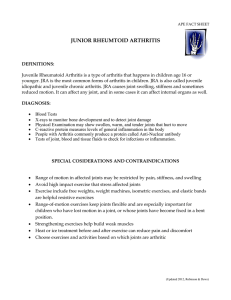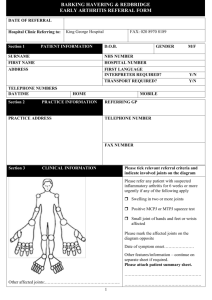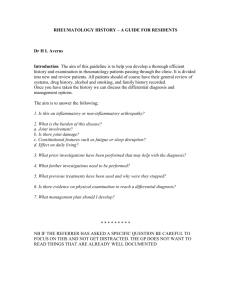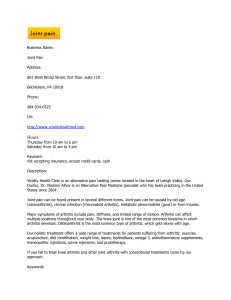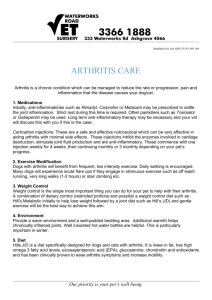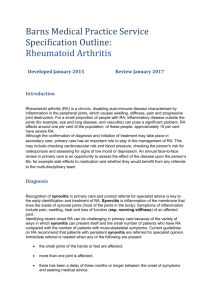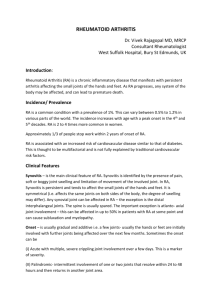Integrative Medicine Approaches to Chronic Pain
advertisement
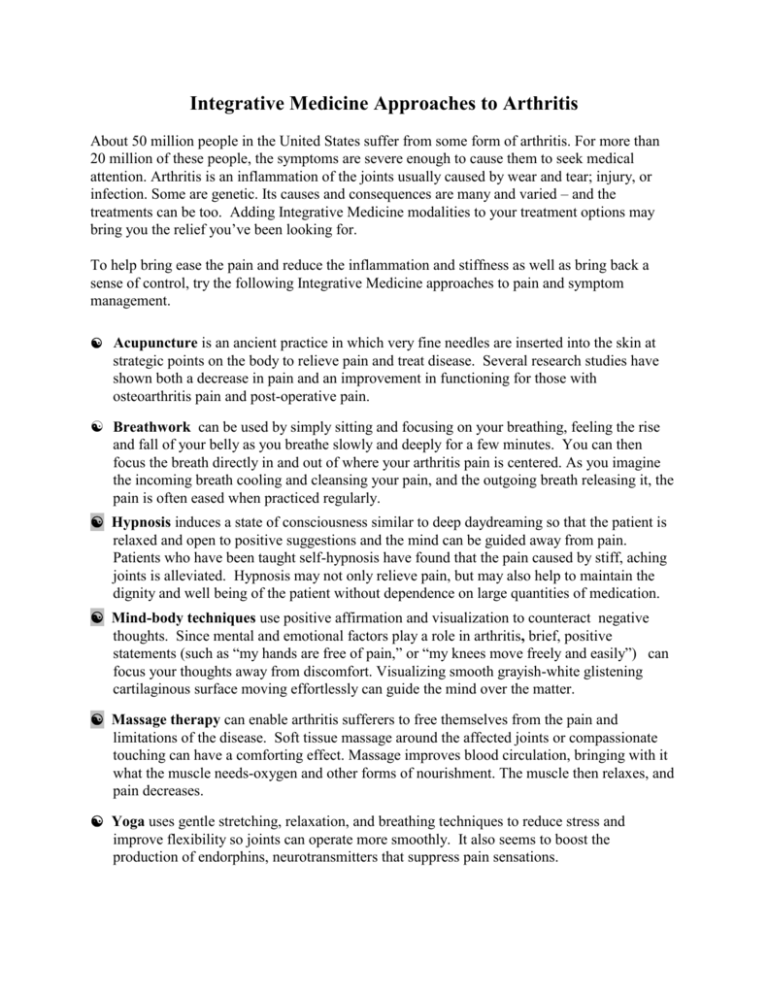
Integrative Medicine Approaches to Arthritis About 50 million people in the United States suffer from some form of arthritis. For more than 20 million of these people, the symptoms are severe enough to cause them to seek medical attention. Arthritis is an inflammation of the joints usually caused by wear and tear; injury, or infection. Some are genetic. Its causes and consequences are many and varied – and the treatments can be too. Adding Integrative Medicine modalities to your treatment options may bring you the relief you’ve been looking for. To help bring ease the pain and reduce the inflammation and stiffness as well as bring back a sense of control, try the following Integrative Medicine approaches to pain and symptom management. Acupuncture is an ancient practice in which very fine needles are inserted into the skin at strategic points on the body to relieve pain and treat disease. Several research studies have shown both a decrease in pain and an improvement in functioning for those with osteoarthritis pain and post-operative pain. Breathwork can be used by simply sitting and focusing on your breathing, feeling the rise and fall of your belly as you breathe slowly and deeply for a few minutes. You can then focus the breath directly in and out of where your arthritis pain is centered. As you imagine the incoming breath cooling and cleansing your pain, and the outgoing breath releasing it, the pain is often eased when practiced regularly. Hypnosis induces a state of consciousness similar to deep daydreaming so that the patient is relaxed and open to positive suggestions and the mind can be guided away from pain. Patients who have been taught self-hypnosis have found that the pain caused by stiff, aching joints is alleviated. Hypnosis may not only relieve pain, but may also help to maintain the dignity and well being of the patient without dependence on large quantities of medication. Mind-body techniques use positive affirmation and visualization to counteract negative thoughts. Since mental and emotional factors play a role in arthritis, brief, positive statements (such as “my hands are free of pain,” or “my knees move freely and easily”) can focus your thoughts away from discomfort. Visualizing smooth grayish-white glistening cartilaginous surface moving effortlessly can guide the mind over the matter. Massage therapy can enable arthritis sufferers to free themselves from the pain and limitations of the disease. Soft tissue massage around the affected joints or compassionate touching can have a comforting effect. Massage improves blood circulation, bringing with it what the muscle needs-oxygen and other forms of nourishment. The muscle then relaxes, and pain decreases. Yoga uses gentle stretching, relaxation, and breathing techniques to reduce stress and improve flexibility so joints can operate more smoothly. It also seems to boost the production of endorphins, neurotransmitters that suppress pain sensations.


